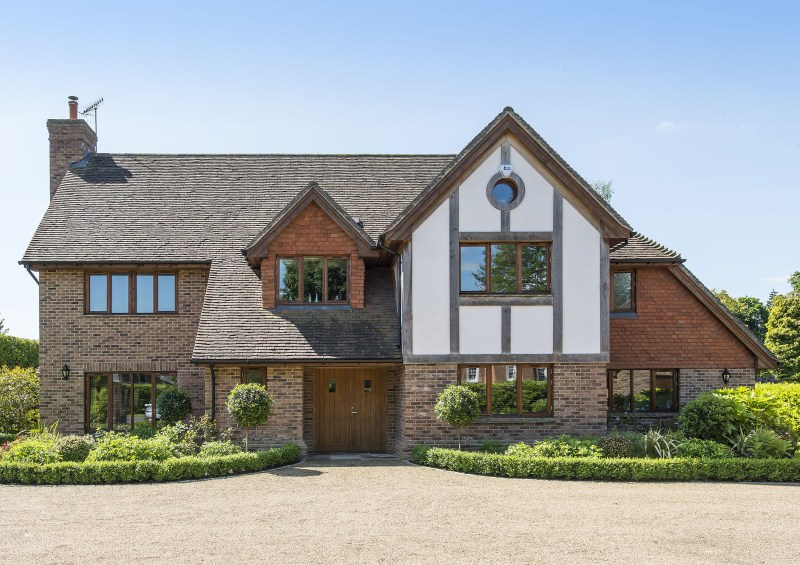
Britain is home to some iconic and unique buildings. Some of these buildings were not built so long ago and are about a decade old. On the other hand, others were built over a hundred years ago. The Gherkin in London is an example of a building constructed just in the previous few decades. On the other hand, an example of medieval architecture is the Tower of London. By looking at British architecture over time, one can see the evolution that has taken place over time. Today, with the push to adopt a more green form of energy, buildings often include a renewable energy source such as solar power. It is important to source your solar equipment from reputable companies. By visiting review sites such as Britainreviews.co.uk, you can have a look at renewable energy company’s online reviews, and from the reviews, you’ll be able to select a reputable company. British architectural styles throughout time have been discussed in this article.
- Tudor
The last phase of Medieval architecture was known as the Tudor period. It included the period of the late 15th century to the early 17th century. A Tudor building’s characteristic features include gable roofs, grouped windows, masonry chimneys, and half-timbering. Classic Tudor also has fantastic Oriel windows and the Low arch. During this period, the use of brick was widespread. Towards the end of the era, half-timbering became popular, especially among the working-class houses.
- Elizabeth Architecture
Prodigy houses defined British architectural styles by the time Elizabeth 1 was ascending to the Throne of England. Prodigy houses typically were eye-catching, flashy country piles constructed by the nobility that profited from the dissolution of monasteries. The reign of Elizabeth 1 was characterised by the building of multiple houses for the wealthy as well as the building of new palaces. The houses build in this era were made more of glass than wall. In the era, the design style shifted from being more protective and instead utilised glasses to lighthouses using natural light. Queen Elizabeth travelled from London to Bristol to spend time in these new opulent buildings.
- Baroque
This style builds on the grand Elizabethan homes and is also inspired by the 16th century Italian Architecture, and thus has more ornate buildings. The style is characterised by bold shapes, curved lines and rich colours that elaborately decorate buildings. This design didn’t stay for long and only persisted for about 50 years. However, it is known to be the style adopted by some famous British homes, such as the Blenheim Palace and the Castle Howard.
- Victorian
The industrial revolution was swiftly rising during this period, English architect Augustus Pugin and art critic John Ruskin played a key role in promoting Gothic Revival in domestic architecture. Bricks again became trendy, and homes adopted an asymmetrical design. The period was characterised by a middle class whose wealth and size were growing and who depicted their status with colourful brickwork and lavish decorations. Victorian homes were often seen as a defining characteristic of British architecture. Nevertheless, in this period, the working populations still lived in either back-to-back homes or small cottages known as terraced houses.
- Edwardian
This era saw the adoption of the late 17th century’s monumental baroque style both for public buildings and grand houses. People were rejecting the industrial age mass-produced goods, which saw the revival of traditional forms and craftsmanship. In the Edwardian era, timber framing and vernacular architecture rose as a result of the art and crafts movements. Edwardian terraces also incorporated hanging tiles and pebbledash. Other popular designs included white painted balconies and timber porches.
- Art Deco
This was the era between 1925 to 1949 and is known for innovation, simplicity, harmony and modernity. It was divided into two: The Zigzag Moderne in 1920 and the Streamline Moderne in the following decade. The style of this era was adopted widely by schools, courthouses and other public buildings. Some of the feature’s characteristic of this era include curved corner walls, small round window, metal railings, chevrons and flat roofs.
- Airey houses
The second world war left a dire need to rebuild houses and a deep desire to offer housing that were fit for all. However, the needed materials and skills were not available readily, which led to the designing of new system-built homes, which could be produced in factories and then erected rapidly on site.
In conclusion, with this article, you have the evolution of British architectural designs over time. One is thus able to appreciate how modern architectural designs have come to be.